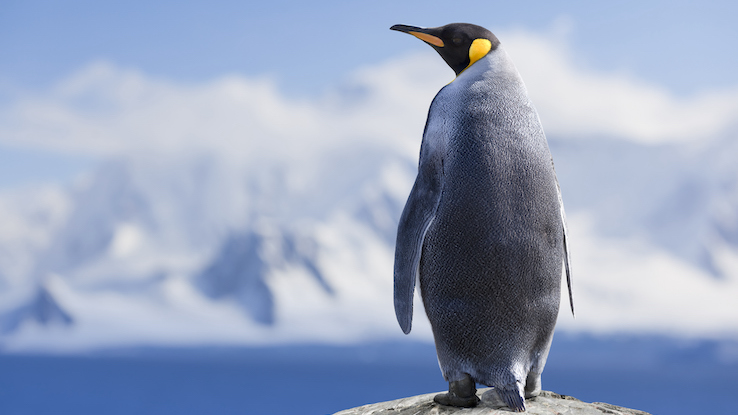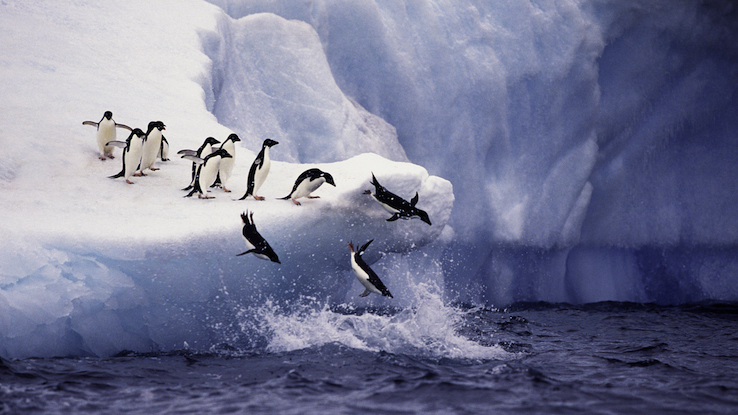All About Penguins: Facts, Habitats and More

Penguins really are fascinating to watch. Whether you’ve seen the adorable birds in nature documentaries or in person, these aquatic, social creatures are a wonder. But how much do you really know about penguins?
While these birds never take flight, they have intriguing lives both on land and in the water. Let’s take a deeper look into these adorable feathered friends and their unique qualities by checking out some fun facts all about penguins.
Though Flightless, Penguins Are Still Technically Birds

Penguins are flightless, aquatic birds that mostly live in the Southern Hemisphere. There are 18 different species of penguins that vary in size and shape. Some of those species include the king penguin, the emperor penguin, the gentoo penguin and the African penguin.
In terms of size, penguins can range anywhere from tiny to human-sized. The blue, or fairy penguin, is only 14 inches in height and about 2 pounds, while the emperor penguin grows to about 45 inches in height and 55 to 90 pounds. No matter their differences as individual species, all of them grow to have black bodies and white bellies. Their appearance serves as great camouflage from predators like seals and orcas.
Even though penguins don’t actually fly — they waddle and swim — they’re technically still considered birds. The reason being is that they meet the biological requirements to be classified this way, similar to other flightless birds like ostriches and emus. Penguins have feathers, lay eggs and are warm-blooded. Their feathers, in particular, are shorter and stiffer than many bird feathers to help them stay warm while on land and swim in the water better.
Penguins Spend Their Lives in Water and on Land

Though they don’t fly, penguins certainly still manage to travel around. Many of them spend their lives both in water and on land. Penguins typically hunt underwater, searching for krill, squid, crabs and other small fish to eat. These birds can swim in the water at 15 miles per hour but they can also pick up speed by leaping in and out of the water. This ability is called “porpoising.”
As they navigate land, penguins hop, run and, most famously, waddle to get around. Others, particularly polar penguins, travel far by sliding across the ice on their stomachs in a form of locomotion known as “tobogganing.”
Penguins Live All Over the Planet

When penguins pop into your mind, you might immediately think that they all live in icy cold weather. Places like Antarctica or the North Pole may come to mind — but those are common misconceptions. Interestingly, only five of the 18 species of penguins ever even step foot on Antarctica. Emperor penguins, the largest species of penguins in the world, do live exclusively in the Antarctic region. Adélie penguins also live here.
However, penguins can live in truly diverse environments, depending on the species. Macaroni penguins and chinstrap penguins live on the Subantarctic islands near the continent. Some penguins even live in warmer climates. For example, there are large penguin populations in New Zealand, Australia, Chile and Argentina. There’s even one species in the penguin family, the endangered Galápagos penguin, found north of the equator in the Galápagos Islands.
Most Penguins Are Monogamous, Colony-Dwelling Birds

Most penguins are monogamous in their mating. However, they don’t all exactly “mate for life,” as many of us have been led to believe. There are a few species of penguins — the Magellanic, gentoo and royal penguins — that do mate for life. However, when the term “monogamous” is used for penguins, it really means that males and females mate exclusively in a particular mating season. Often, those same pairs mate with each other the rest of their lives, but not always.
On land, and during mating season especially, penguins huddle in large colonies that consist of thousands of penguins in one area. This helps to not only keep them warm in colder regions but also to protect them from predators. Though most penguins do reside in colonies, there’s a species of penguin that prefers to live just with their mate: The yellow-eyed penguins down in New Zealand live in isolated pairs throughout their lives.
Other Lesser-Known Facts About Penguins

Now that you know some general facts about penguins, go a step further with these interesting tidbits about some of our world’s most charming birds.
- Though you may see them together in popular media, you’ll never see penguins and polar bears together in real life. Polar bears live north of the equator, and penguins, as discussed, mostly live south.
- An emperor penguin holds the record for the deepest dive ever, as recorded by the Australian Antarctic Division. It reached a remarkable 1,850 feet. This species is able to hold its breath for up to 22 minutes!
- Penguins can drink saltwater with ease thanks to the supraorbital gland above their eye. It removes salt from their bloodstream either through their bill or through a sneeze.
- The gentoo penguin is the fastest of all of the penguin species out there. It can reach speeds of up to 30 miles per hour in the water.
- In penguin culture, fathers are responsible for protecting penguin eggs before they hatch, while mothers venture out to hunt for food.
- The macaroni penguin got its name from 18th-century British explorers. They thought the penguins looked like fancy dressers from the region, known as “macaronis,” who wore feathers in their hats. This type of penguin has a group of distinctive yellow feathers on its head.
- Penguins lose every last one of their feathers once a year. During that two- or three-week molting process, they’re unable to swim or fish until their feathers grow back.
Whether you’re celebrating World Penguin Day on April 25 or are simply looking to learn more about the fascinating creatures we share a home with, these facts can help you appreciate just how incredible penguins are.





